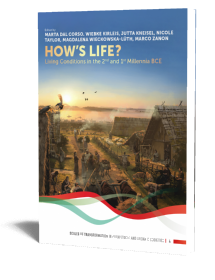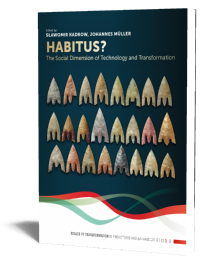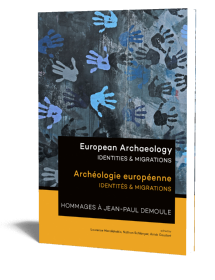Gender Transformations in Prehistoric and Archaic Societies
Edited by Julia Katharina Koch & Wiebke Kirleis | 2019
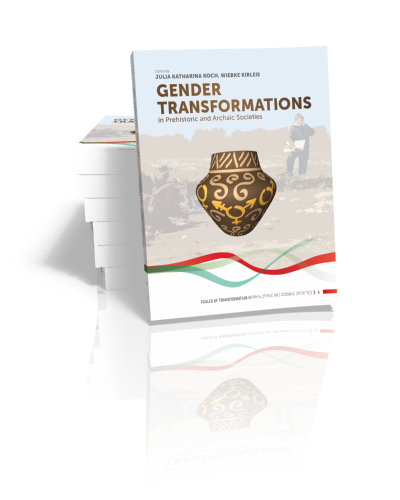
Gender Transformations in Prehistoric and Archaic Societies
Edited by Julia Katharina Koch & Wiebke Kirleis | 2019
Paperback ISBN: 9789088908217 | Hardback ISBN: 9789088908224 | Imprint: Sidestone Press Academics | Format: 210x280mm | 502 pp. | Scales of Transformation 06 | Series: Scales of Transformation | Language: English | 114 illus. (bw) | 58 illus. (fc) | Keywords: academic fieldwork; gender archaeology; social archaeology; environmental archaeology; history of archaeology; Mesolithic; Neolithic; Bronze Age; Iron Age; Europe; South-west Asia; Central Asia | download cover | DOI: 10.59641/g9023js
Read online or downloaded 2476 times
-
Digital & Online access
This is a full Open Access publication, click below to buy in print, browse, or download for free.
-
Buy via Sidestone (EU & UK)
-
Buy via our Distributors (WORLD)
For non-EU or UK destinations you can buy our books via our international distributors. Although prices may vary this will ensure speedy delivery and reduction in shipping costs or import tax. But you can also order with us directly via the module above.
UK international distributor
USA international distributor
-
Bookinfo
Paperback ISBN: 9789088908217 | Hardback ISBN: 9789088908224 | Imprint: Sidestone Press Academics | Format: 210x280mm | 502 pp. | Scales of Transformation 06 | Series: Scales of Transformation | Language: English | 114 illus. (bw) | 58 illus. (fc) | Keywords: academic fieldwork; gender archaeology; social archaeology; environmental archaeology; history of archaeology; Mesolithic; Neolithic; Bronze Age; Iron Age; Europe; South-west Asia; Central Asia | download cover | DOI: 10.59641/g9023js
Read online or downloaded 2476 times

We will plant a tree for each order containing a paperback or hardback book via OneTreePlanted.org.
In which chronological, spatial, and social contexts is gender a relevant social category that is noticeable in the archaeological material? How can transformations in social gender relations and identity be recognized archaeologically? Is the identity of prehistoric people defined by gender? If so, what is the accompanying cultural context? What about gender equality among the scientists working in archaeology? In what degree are research teams, as well as their scientific approaches, biased today?
These and other burning questions are intensively discussed in this volume, which comprises 25 contributions presented at the international workshop ‘Gender Transformations in Prehistoric and Archaic Societies’, organised by the Collaborative Research Centre 1266 of Kiel University funded by the German Research Foundation (DFG). The workshop offered a platform to discuss a broad range of approaches on the inter-dependencies between gender relations and socio-environmental transformation processes.
Beyond a focus on the archaeology of women, gender archaeology offers a variety of possibilities to reconstruct the contribution of social groups differentiated e.g. by age, gender, and activities related to cultural transformation, based on the archaeological material. Thus, this volume includes papers dealing with different socio-economic units, from south-western Europe to Central Asia, between 15,000 and 1 BCE, paying particular attention to the scale of social reach. Since gender archaeology, and in particular feminist archaeology, also addresses the issue of scientific objectivity or bias, parts of this volume are dedicated to equal opportunity matters in archaeological academia across the globe. This is realised by bringing together feminist and female experiences from a range of countries, each with its own specific individual, cultural, and social perspectives and traditions.
The papers are organised along three central topics: ‘Gendering fieldwork’, ‘Tracing gender transformations’, and ‘Gendering and shaping the environment’. By gendering the archaeological discussion on transformation processes, the contributions aim to more firmly embed gender-sensitive research in the archaeological agenda, not just in Europe, but world-wide.
Preface of the editors
Wiebke Kirleis and Johannes Müller
Introduction
Julia Katharina Koch and Wiebke Kirleis
1. Gendering Fieldwork
Matters of gender in a prominent excavation by the German Archaeological Institute: Fieldwork and gender in the Kerameikos in Athens
Jutta Stroszeck
Women in the field: Preliminary insights from images of archaeology in Portugal in the 1960s and the 1970s. A first essay
Ana Cristina Martins
Gendered and diversified fieldwork classes in prehistoric archaeology? An examination of and a perspective on Bachelor study programs of German universities
Doris Gutsmiedl-Schümann
‘Fieldwork is not the proper preserve of a lady’: Gendered images of archaeologists from textbooks to social media
Jana Esther Fries
2. Tracing gender transformations
2.1. In methodology
What is gender transformation, where does it take place and why? Reflections from archaeology
Marie Louise Stig Sørensen
Osteology defines sex and archaeology defines gender? Insights from physical anthropology
Johanna Kranzbühler
Gender in Linearbandkeramik research: Traditional approaches and new avenues
Nils Müller-Scheeßel
2.2. In burials
Changing gender perception from the Mesolithic to the beginning of the Middle Neolithic
Daniela Nordholz
Making the invisible visible: Expressing gender in mortuary practices in north-eastern Hungary in the 5th millennium BCE
Alexandra Anders and Emese Gyöngyvér Nagy
Copper Age transformations in gender identities
Jan Turek
Gender symbolism in female graves of the Bronze Age evidenced by the materials from the Lisakovsk burial complex of the Andronovo cultural horizon
Emma R. Usmanova and Marina K. Lachkova
Male gender identity during the Ural Bronze Age: On the way down?
Natalie Berseneva
Transformations in a woman’s life in prehistoric and archaic societies of the Scythians and the Kalmyks
Maria Ochir-Goryaeva
Tracing gender in funerary data: The case study of elite graves in the North-Alpine complex (Late Bronze Age to La Tène B)
Caroline Tremeaud
2.3. In cultural landscapes
Social manipulation of gender identities in Early Iron Age Latium Vetus (Italy)
Ilona Venderbos
Time- and space-related genders and changing social roles: A case study from Archaic southern Italy
Christian Heitz
2.4. In ritual and art
‘Shaman’ burials in prehistoric Europe: Gendered images?
Nataliia Mykhailova
Part-time females and full-time specialists? Identifying gender roles in ritual behaviour and archaeological remains
Andy Reymann
Beyond gender: Approaches to anthropomorphic imagery in prehistoric central Anatolia
Aysel Arslan
Art and gender: The case study of enamelling in continental Europe (4th-3rd century BCE)
Virginie Defente
3. Gendering and shaping the environment
Gender and the environment
Julia K. Koch and Oliver Nakoinz
The gender division of labour during the proto-Elamite period in late 4th millennium Iran
Rouhollah Yousefi Zoshk, Saeed Baghizadeh and Donya Etemadifar
Labour organisation between horticulture and agriculture: Two separate worlds?
Wiebke Kirleis
Change and continuity: Gender and flint knapping activities during the Neolithic in the Paris basin
Anne Augereau
The construction of space and gender in prehistory: An approach to the Chalcolithic walled enclosures of Iberia?
Ana M. Vale
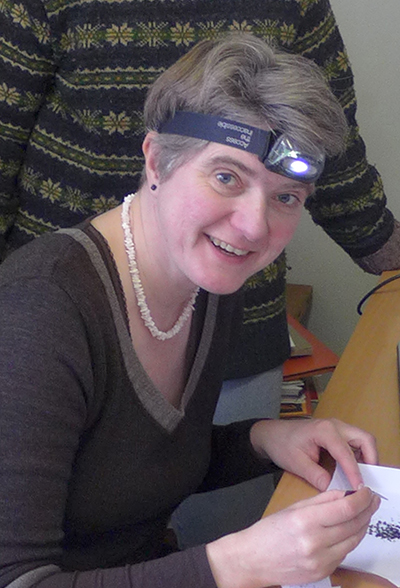
Prof. Dr. Wiebke Kirleis
Wiebke Kirleis is professor of environmental archaeology/archaeobotany at Kiel University, Germany. She is deputy director of the Collaborative Research Centre ‘Scales of Transformation: Human–Environmental Interaction in Prehistoric and Archaic Societies’ (CRC 1266, financed by the German Research Foundation/DFG) and a member of the Cluster of Excellence ‘Roots’ at Kiel University.

Dr. Julia Katharina Koch
Julia Katharina Koch has studied at Mainz University, Germany, and Kiel University. Her PhD dissertation (1999) was on the wagon and horse harness from the Late Hallstatt princely grave of Hochdorf. Her research focus is on mobility, cultural transfer, and gender relations in Bronze and Iron Age Central Europe.
Abstract:
In which chronological, spatial, and social contexts is gender a relevant social category that is noticeable in the archaeological material? How can transformations in social gender relations and identity be recognized archaeologically? Is the identity of prehistoric people defined by gender? If so, what is the accompanying cultural context? What about gender equality among the scientists working in archaeology? In what degree are research teams, as well as their scientific approaches, biased today?
These and other burning questions are intensively discussed in this volume, which comprises 25 contributions presented at the international workshop ‘Gender Transformations in Prehistoric and Archaic Societies’, organised by the Collaborative Research Centre 1266 of Kiel University funded by the German Research Foundation (DFG). The workshop offered a platform to discuss a broad range of approaches on the inter-dependencies between gender relations and socio-environmental transformation processes.
Beyond a focus on the archaeology of women, gender archaeology offers a variety of possibilities to reconstruct the contribution of social groups differentiated e.g. by age, gender, and activities related to cultural transformation, based on the archaeological material. Thus, this volume includes papers dealing with different socio-economic units, from south-western Europe to Central Asia, between 15,000 and 1 BCE, paying particular attention to the scale of social reach. Since gender archaeology, and in particular feminist archaeology, also addresses the issue of scientific objectivity or bias, parts of this volume are dedicated to equal opportunity matters in archaeological academia across the globe. This is realised by bringing together feminist and female experiences from a range of countries, each with its own specific individual, cultural, and social perspectives and traditions.
The papers are organised along three central topics: ‘Gendering fieldwork’, ‘Tracing gender transformations’, and ‘Gendering and shaping the environment’. By gendering the archaeological discussion on transformation processes, the contributions aim to more firmly embed gender-sensitive research in the archaeological agenda, not just in Europe, but world-wide.
Contents
Preface of the editors
Wiebke Kirleis and Johannes Müller
Introduction
Julia Katharina Koch and Wiebke Kirleis
1. Gendering Fieldwork
Matters of gender in a prominent excavation by the German Archaeological Institute: Fieldwork and gender in the Kerameikos in Athens
Jutta Stroszeck
Women in the field: Preliminary insights from images of archaeology in Portugal in the 1960s and the 1970s. A first essay
Ana Cristina Martins
Gendered and diversified fieldwork classes in prehistoric archaeology? An examination of and a perspective on Bachelor study programs of German universities
Doris Gutsmiedl-Schümann
‘Fieldwork is not the proper preserve of a lady’: Gendered images of archaeologists from textbooks to social media
Jana Esther Fries
2. Tracing gender transformations
2.1. In methodology
What is gender transformation, where does it take place and why? Reflections from archaeology
Marie Louise Stig Sørensen
Osteology defines sex and archaeology defines gender? Insights from physical anthropology
Johanna Kranzbühler
Gender in Linearbandkeramik research: Traditional approaches and new avenues
Nils Müller-Scheeßel
2.2. In burials
Changing gender perception from the Mesolithic to the beginning of the Middle Neolithic
Daniela Nordholz
Making the invisible visible: Expressing gender in mortuary practices in north-eastern Hungary in the 5th millennium BCE
Alexandra Anders and Emese Gyöngyvér Nagy
Copper Age transformations in gender identities
Jan Turek
Gender symbolism in female graves of the Bronze Age evidenced by the materials from the Lisakovsk burial complex of the Andronovo cultural horizon
Emma R. Usmanova and Marina K. Lachkova
Male gender identity during the Ural Bronze Age: On the way down?
Natalie Berseneva
Transformations in a woman’s life in prehistoric and archaic societies of the Scythians and the Kalmyks
Maria Ochir-Goryaeva
Tracing gender in funerary data: The case study of elite graves in the North-Alpine complex (Late Bronze Age to La Tène B)
Caroline Tremeaud
2.3. In cultural landscapes
Social manipulation of gender identities in Early Iron Age Latium Vetus (Italy)
Ilona Venderbos
Time- and space-related genders and changing social roles: A case study from Archaic southern Italy
Christian Heitz
2.4. In ritual and art
‘Shaman’ burials in prehistoric Europe: Gendered images?
Nataliia Mykhailova
Part-time females and full-time specialists? Identifying gender roles in ritual behaviour and archaeological remains
Andy Reymann
Beyond gender: Approaches to anthropomorphic imagery in prehistoric central Anatolia
Aysel Arslan
Art and gender: The case study of enamelling in continental Europe (4th-3rd century BCE)
Virginie Defente
3. Gendering and shaping the environment
Gender and the environment
Julia K. Koch and Oliver Nakoinz
The gender division of labour during the proto-Elamite period in late 4th millennium Iran
Rouhollah Yousefi Zoshk, Saeed Baghizadeh and Donya Etemadifar
Labour organisation between horticulture and agriculture: Two separate worlds?
Wiebke Kirleis
Change and continuity: Gender and flint knapping activities during the Neolithic in the Paris basin
Anne Augereau
The construction of space and gender in prehistory: An approach to the Chalcolithic walled enclosures of Iberia?
Ana M. Vale

Prof. Dr. Wiebke Kirleis
Wiebke Kirleis is professor of environmental archaeology/archaeobotany at Kiel University, Germany. She is deputy director of the Collaborative Research Centre ‘Scales of Transformation: Human–Environmental Interaction in Prehistoric and Archaic Societies’ (CRC 1266, financed by the German Research Foundation/DFG) and a member of the Cluster of Excellence ‘Roots’ at Kiel University.

Dr. Julia Katharina Koch
Julia Katharina Koch has studied at Mainz University, Germany, and Kiel University. Her PhD dissertation (1999) was on the wagon and horse harness from the Late Hallstatt princely grave of Hochdorf. Her research focus is on mobility, cultural transfer, and gender relations in Bronze and Iron Age Central Europe.
-
Digital & Online access
This is a full Open Access publication, click below to buy in print, browse, or download for free.
-
Buy via Sidestone (EU & UK)
-
Buy via our Distributors (WORLD)
For non-EU or UK destinations you can buy our books via our international distributors. Although prices may vary this will ensure speedy delivery and reduction in shipping costs or import tax. But you can also order with us directly via the module above.
UK international distributor
USA international distributor
- Browse all books by subject
-
Search all books

We will plant a tree for each order containing a paperback or hardback book via OneTreePlanted.org.
You might also like:
© 2025 Sidestone Press KvK nr. 28114891 Privacy policy Sidestone Newsletter Terms and Conditions (Dutch)
